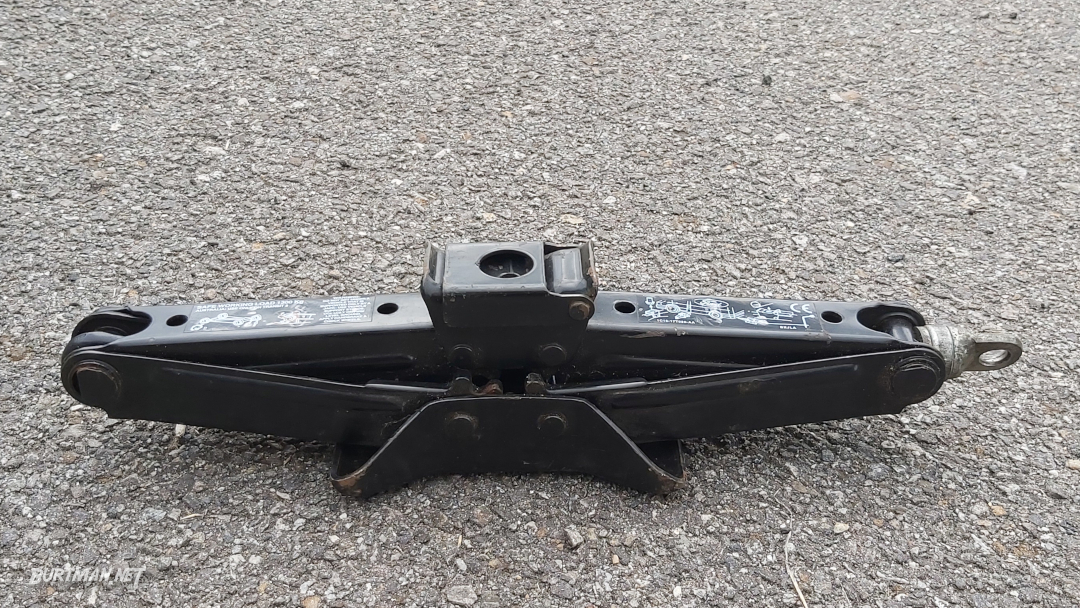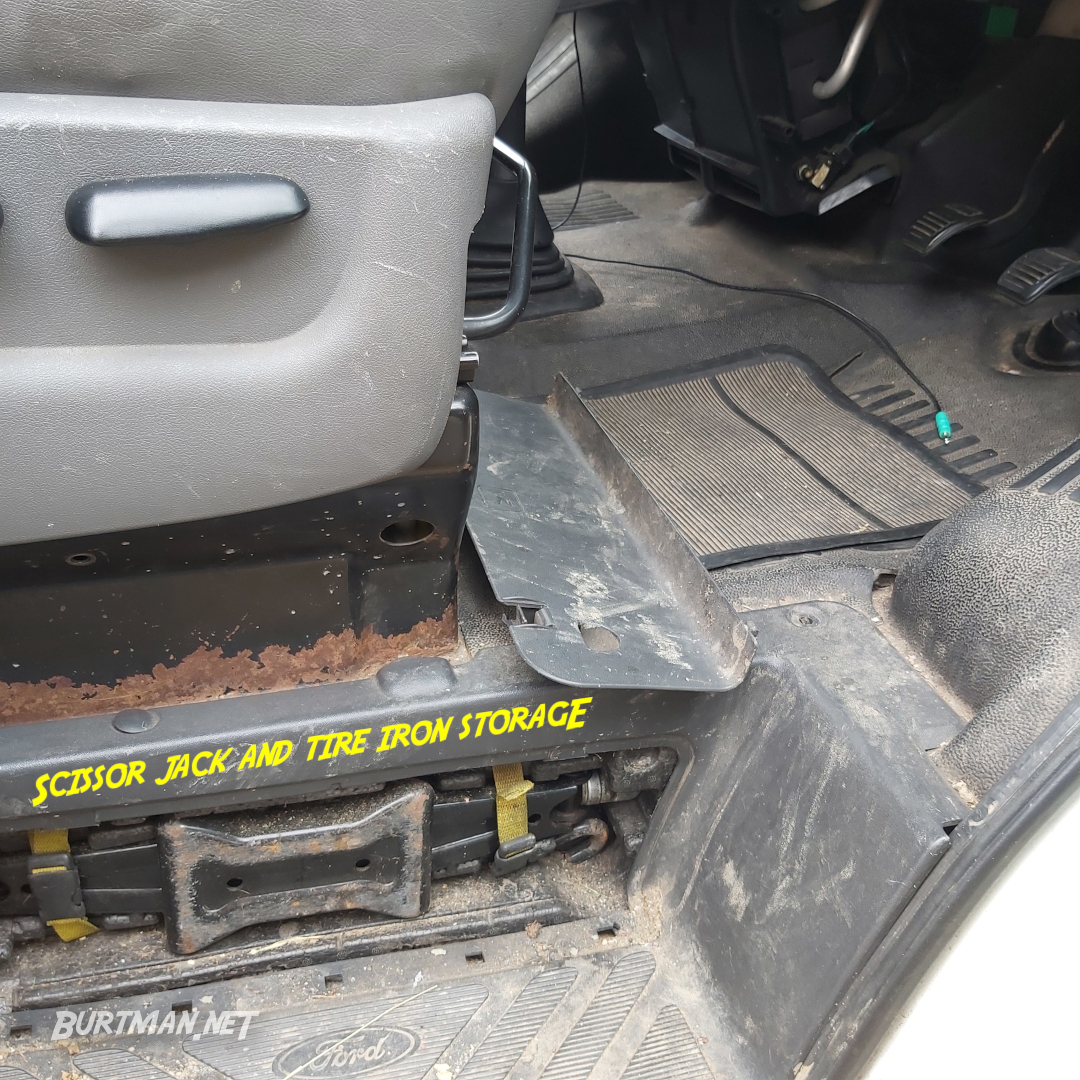Scissor Jack
Never work under a vehicle that is supported only by a jack. Always use axle stands to take the weight of the vehicle. Jacks can fail under weight, or because of damage, wear, bad surface quality and so on. The results can be fatal. Always check your jack for signs of excessive wear or damage before using, and lift your vehicle on a flat surface, using the correct jacking points. If you don't know where the jacking points are, consult your owner's manual or look it up online BEFORE using the jack.
Scissor jacks are the cheapest type of jack and the most vulnerable to failure. It is strongly recommended to use a higher quality jack to work on your vehicle, but if there is no alternative available when needed, proceed with extreme caution. Wear safety gloves and clean the screw thread with brake cleaner before use - an excessively dirty thread can result in uneven winding, causing the jack to stick and jump. This can lead to the jack falling over when in use, which could cause serious injury or worse, not to mention damage to property.
A mechanical lifting device. The scissor jack is the type you will find in most vehicles, due to its small folded size and manufacturing cost. It's not the best type of jack, but it may be all you have to work with.


A scissor jack in its compressed state, as it will be when removed from storage.

Pictured with the winder bar, in an extended position.

Winder bar attached to the jack's rotator ring.
To operate, place the jack on a solid, flat surface, underneath a jacking point on your vehicle. Unfold the winder bar firmly, so it locks into a straight line, and hook the end of the bar into the jack's rotator ring (pictured). Wind the jack up with a clockwise rotation of the winder bar until it reaches the vehicle.
Before applying further pressure, check that the jack is completely upright and placed exactly below the jacking point, to avoid damage and/or injury, then wind further until the vehicle reaches a height that allows you to place an axle stand to safely take the vehicle's weight. Once the stand is in position, lower the vehicle onto the stand.

You may find your scissor jack with the stock tire iron, under the spare wheel, inside the van's cabin step, or somewhere equally tucked away.





 Back To Tool List
Back To Tool List